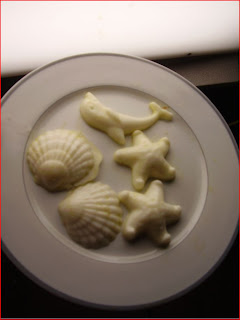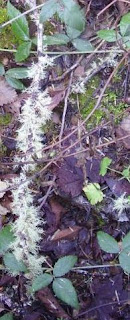Soapmaking and cedar II: Progress and evaluation
So I'd have to give my efforts with the glycerine soap and cedar oil a C at best--it was a creative idea to try to apply the lesson in making cedar oil, but it was very lazy not to look up whether glycerine was hydrophilic or hydrophobic, so that kinds of cancels out the creativity.
It wasn't a total loss, however--very little cedar oil actually got lost, and Mr thalarctos actually likes the pure-glycerine-and-nothing-else soap. I have lots of varieties of scented and colored soap in the shower that I like to combine for a different experience each time, while he's a pure Ivory-soap type of guy. Unfortunately, he has a number of allergies--he phoned me from the allergist's office after taking a series of tests to announce that, really, he was only allergic to two things: "food" and "nature". So soap with no scent or color suits him just fine, and he's already burned through the dolphin, starfish, and seashells I made.
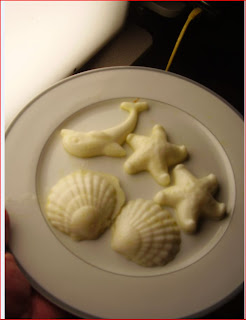
Clearly, the results of the first batch showed that a change of course was called for. Learning that glycerine was indeed hydrophilic implied that a water-based herbal infusion would work better, so instead of dropping the lavender I had chopped up into the oil I was planning to infuse it in, I brewed a lavender tisane instead.
"Tisane" is nothing more than the strictly correct word for what is often called "herbal tea". Since herbal teas usually don't contain any Camellia sinensis, or tea plant, "tea" is, strictly speaking, a misnomer. But they're marketed as "herbal teas", and I did have some "peppermint tea" lying around, so I made a peppermint tisane as well to continue making glycerine soap with water-based herbal infusions.
These worked out much better!
The peppermint tisane was much more effective than the lavender one at imparting color to the soap--below is the first batch of peppermint soap, and you can see that it is definitely more yellow-green than was the pure glycerine.
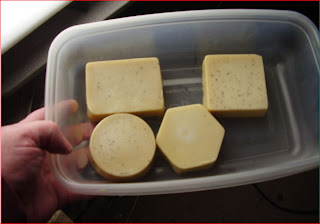
Which totally makes sense--the tisane dissolved in the glycerine, and so the color and scent was evenly distributed in the resulting soap.
By contrast, the lavender soap (the embossed designs, while the peppermint is plain flat surfaces), came out much paler in color.
 |  |
So this batch was definitely more of a success. There is room for improvement, however--while the color is pretty even, the herbal material itself is fairly unevenly distributed--it settled out, as you can see in the following photo.
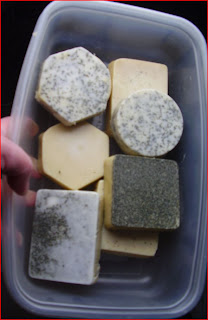
So, goals for next time--a cedar tisane, in order to make my cedar soap successfully, and a solution to the problem of the herbal material settling out unevenly.
Labels: crafts, herbs, lavender, peppermint, soap
Read more!



